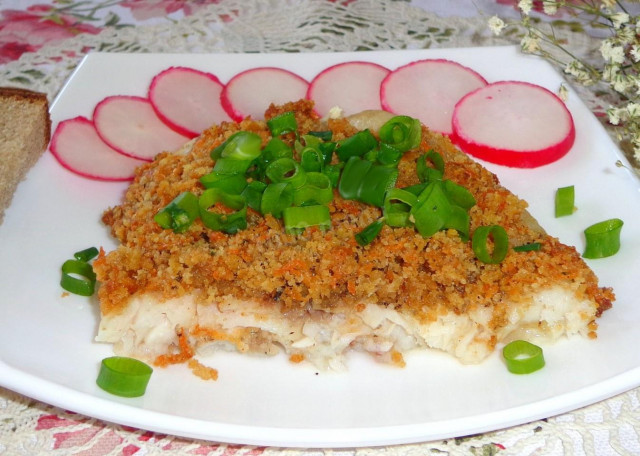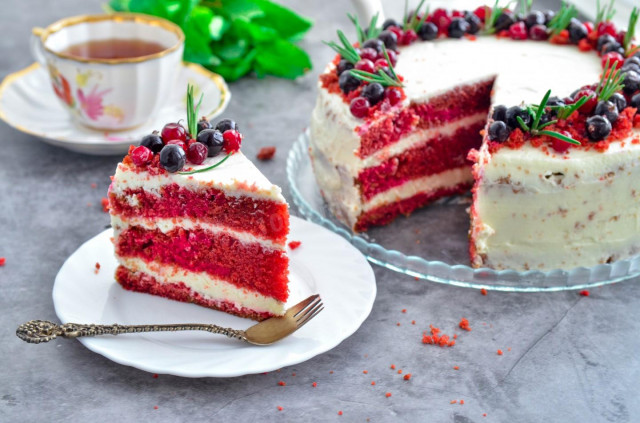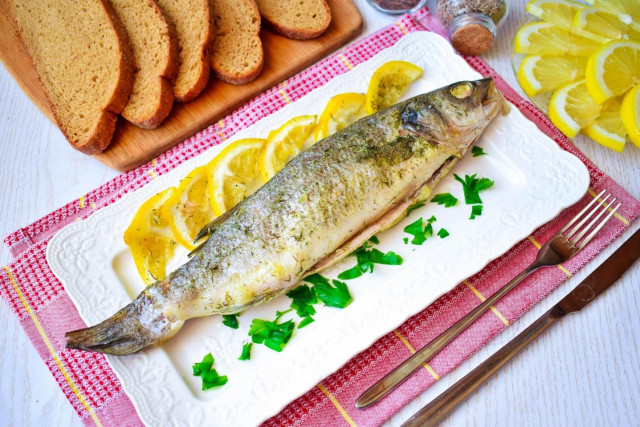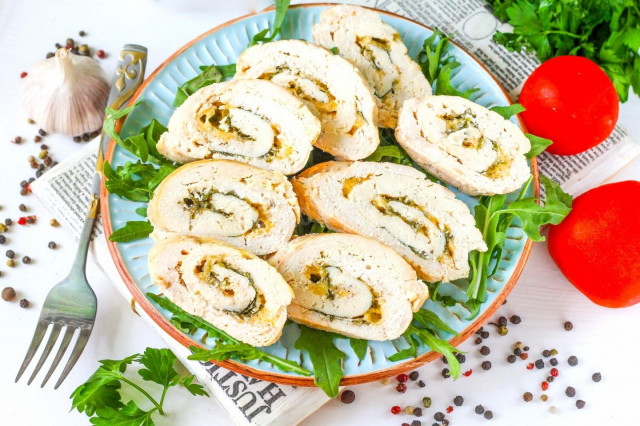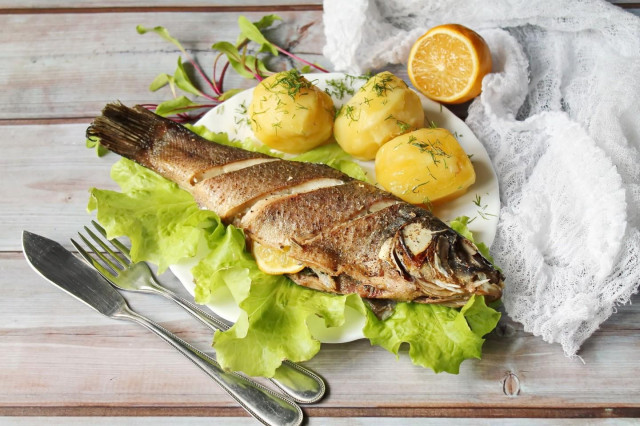Composition / ingredients
Step-by-step cooking
Step 1:
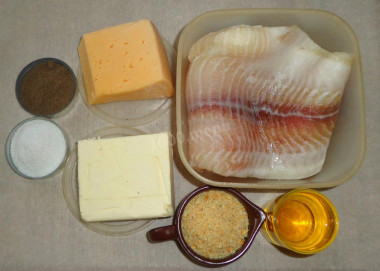
1.Prepare all the products. To prepare this dish, you can take a ready-made fillet of sea tongue. It needs to be defrosted and slightly wrung out with water. To lubricate the mold, you will need vegetable oil. And for baking, you need to take a ceramic or glass mold. An iron baking sheet is also suitable, it needs to be covered with foil.
Step 2:
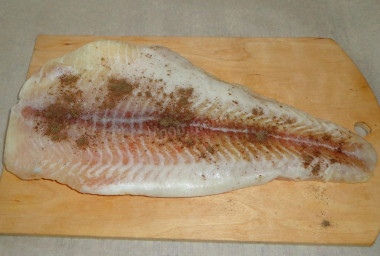
2.Put the fish fillets on a cutting board. Sprinkle salt and black pepper on both sides.
Step 3:
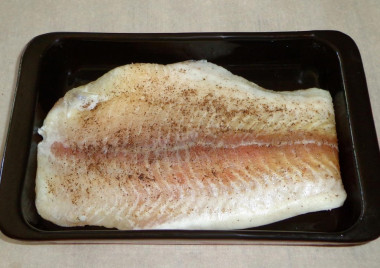
3.Lubricate the ceramic mold with vegetable oil. Put the fillets in the mold.
Step 4:
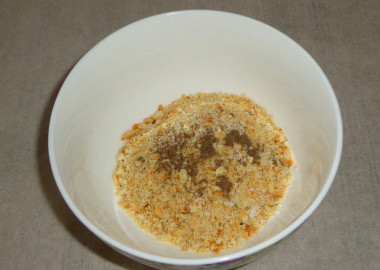
4.Pour the breadcrumbs into a small plate. Add a little salt and pepper.
Step 5:
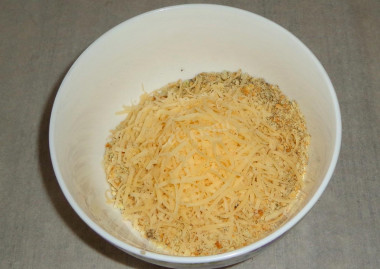
5.Grate the cheese with a fine grater. Add it to the breading, mix with a fork.
Step 6:
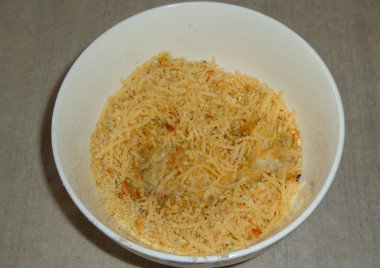
6.Melt the butter over low heat. Pour the butter to the breadcrumbs, stir. The breading is ready.
Step 7:
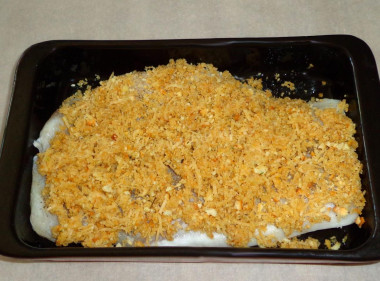
7.Spread the breadcrumbs evenly over the fish fillets.
Step 8:
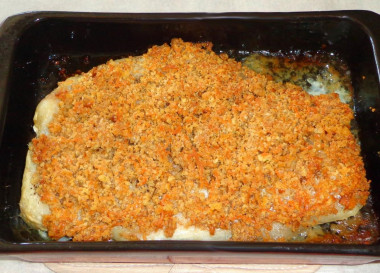
8.Put a form with fish in the oven. Turn on the fire, preheat the oven to 190 degrees. Cook for approximately 15-20 minutes. The top of the breading will be browned, and the fish will be easily pierced with a toothpick or knife. Turn off the oven and serve the fish to the table after 20 minutes. While the fish is being baked, you can cook pasta, buckwheat, potatoes or other side dish to taste. And you can also eat fish as an independent dish with fresh vegetables.
Sea tongue can be baked in small pieces, or cut into a ready-made dish. Such fish is delicious not only hot, but also chilled. Unlike pollock, the sea tongue turns out juicy and very satisfying. And with breading, the dish looks festive and unusual. Bon appetit!
Caloric content of the products possible in the composition of the dish
- Dutch cheese - 352 kcal/100g
- Swiss cheese - 335 kcal/100g
- Cheese "Russian" - 366 kcal/100g
- Kostroma cheese - 345 kcal/100g
- Yaroslavsky cheese - 361 kcal/100g
- Altai cheese 50% fat content - 356 kcal/100g
- Soviet cheese - 400 kcal/100g
- Cheese "steppe" - 362 kcal/100g
- Uglich cheese - 347 kcal/100g
- Poshekhonsky cheese - 350 kcal/100g
- Lambert cheese - 377 kcal/100g
- Appnzeller cheese with 50% fat content - 400 kcal/100g
- Chester cheese with 50% fat content - 363 kcal/100g
- Edamer cheese with 40% fat content - 340 kcal/100g
- Cheese with mushrooms of 50 % fat content - 395 kcal/100g
- Emmental cheese with 45% fat content - 420 kcal/100g
- Gouda cheese with 45% fat content - 356 kcal/100g
- Aiadeus cheese - 364 kcal/100g
- Dom blanc cheese (semi-hard) - 360 kcal/100g
- Lo spalmino cheese - 61 kcal/100g
- Cheese "etorki" (sheep, hard) - 401 kcal/100g
- White cheese - 100 kcal/100g
- Fat yellow cheese - 260 kcal/100g
- Altai cheese - 355 kcal/100g
- Kaunas cheese - 355 kcal/100g
- Latvian cheese - 316 kcal/100g
- Limburger cheese - 327 kcal/100g
- Lithuanian cheese - 250 kcal/100g
- Lake cheese - 350 kcal/100g
- Gruyere cheese - 396 kcal/100g
- Sea language - 88 kcal/100g
- Ground black pepper - 255 kcal/100g
- Butter 82% - 734 kcal/100g
- Amateur unsalted butter - 709 kcal/100g
- Unsalted peasant butter - 661 kcal/100g
- Peasant salted butter - 652 kcal/100g
- Melted butter - 869 kcal/100g
- Vegetable oil - 873 kcal/100g
- Table salt - 0 kcal/100g
- Breadcrumbs - 347 kcal/100g

